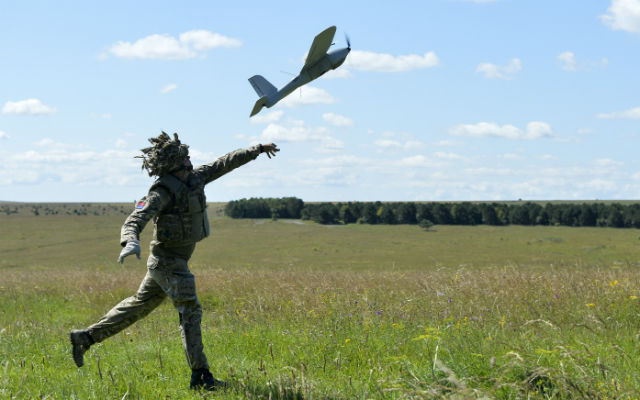Lockheed Martin has delivered an upgrade to the British Army's inventory of Desert Hawk hand-launched unmanned air vehicles, taking it to the 3.1 standard. The manufacturer is also engaged in a six-year support contract for the type.
Changes over previous iterations include improved endurance, from 60-90min to 2.5h, and modifications to the launch and land methods from the glided launch and “controlled crash” landing.
“We now have a much easier way of launching with twice the thrust… and a deep stall landing,” says Andy Horler, business development manager for Lockheed Martin UK’s integrated systems division.
The new landing system eliminates the potential for damage, particularly to the nose cone.

Lockheed Martin
Full operational capability for the upgraded model was achieved in August, with the full inventory modified and delivered ahead of schedule. The army is also evaluating acquiring Desert Hawk 4s, Horler says, which feature the changes incorporated onto the 3.1.
The Ministry of Defence also announced that it had awarded a contract extension to Marlborough Communications to support the army's Black Hornet nano UAV through to its out of service date in 2017, a system that has also entered the MoD's core equipment programme alongside the Desert Hawk. It also achieved FOC status in August, and together the Desert Hawk and Black Hornet contracts are worth some £23 million ($36 million), the MoD says.
MOD recently awarded a contract extension to Marlborough Communications Limited to support Black Hornet through to its Out of Service Date in 2017, while Lockheed Martin Mission Systems and Training has also been awarded a contract to support the Desert Hawk 3 programme. Both achieved Full Operating Capability (FOC) last month.
Elsewhere, the US Department of the Interior is assessing the company’s Indago quad-rotor UAV. The system has also received an upgrade, with a camera improvement that now has a 30x zoom, up from 10x in the previous version.
During Cyclone Pam, in Vanuatu, the Indago was used for surveillance by Heliwest, and teaming testing has been carried out with the Lockheed/Kaman K-Max unmanned rotorcraft, for firefighting roles.
Source: FlightGlobal.com



















